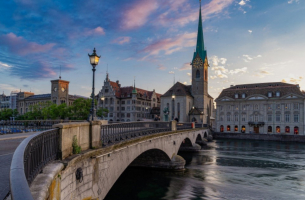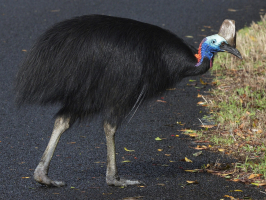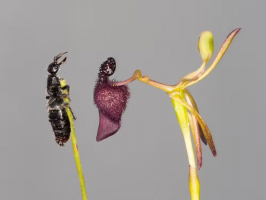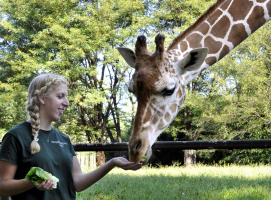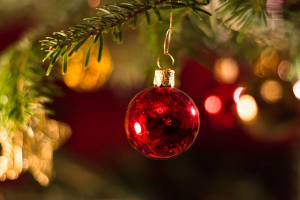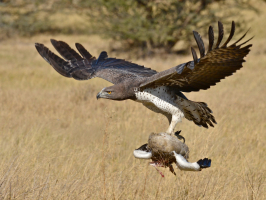Top 10 World's Amazingly Colourful Woodpeckers
Woodpeckers are a group of near-passerine birds that can be found worldwide, except for Australia, New Guinea, New Zealand, Madagascar, and the extreme polar ... read more...regions. They are chiefly known for their characteristic behavior where they mostly forage for insect prey on the trunks and branches of trees, and often communicate by drumming with their beak, producing a reverberatory sound that can be heard at some distance. With almost 200 species worldwide, woodpeckers' feathers range from plain to striking. Let's take a look at the most beautiful colorful woodpeckers in the world.
-
The Pileated Woodpecker (Dryocopus pileatus) is a large, mostly black woodpecker native to North America. It is an insectivore that lives in deciduous woods in eastern North America, along the Pacific Coast, in Canada's boreal forests, and near the Great Lakes. Except possibly for the ivory-billed woodpecker, which the U.S. Fish and Wildlife Service has suggested be listed as extinct, it is the largest woodpecker species that is still alive in North America. The big slaty woodpecker and the black woodpecker are the two other largest woodpecker species in the world, respectively.
Pileated Woodpecker is a particularly huge woodpecker with a long neck and a triangular crest that sweeps off the rear of the head. About as long as the head, the bill is long and chisel-like. When flying, the bird can resemble a crow because of its large wings. The Pileated Woodpecker has a red crown, white stripes on the face and neck, and a primarily black body. On their cheek, males have a crimson stripe. The bird's large white underwings are visible in flight, as are the little white crescents at the bases of the primaries on the upper side.
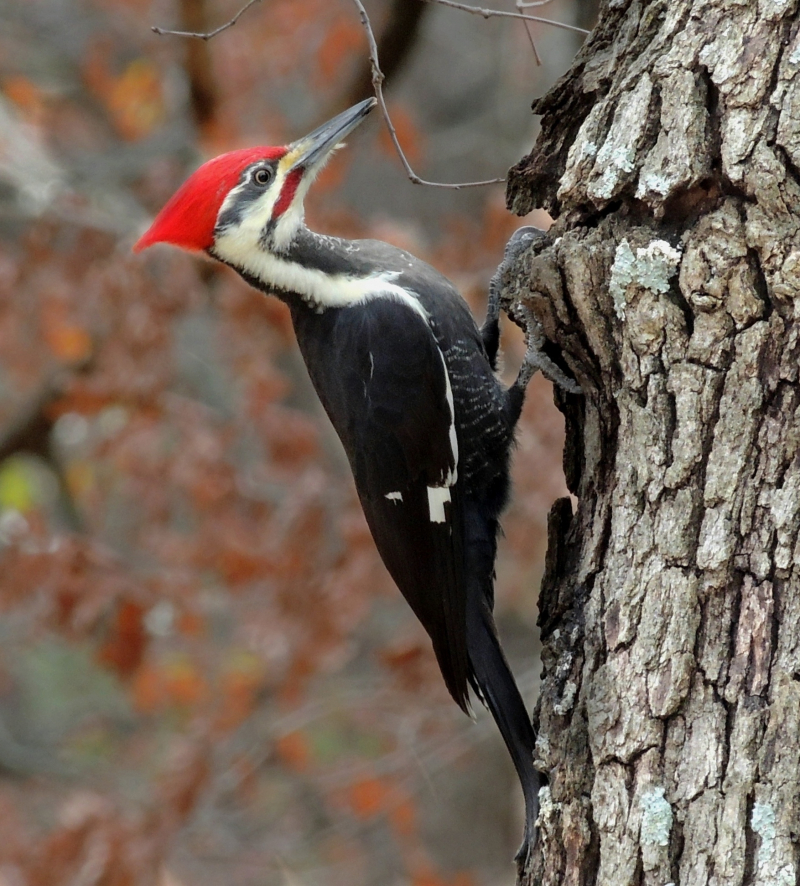
Wikipedia 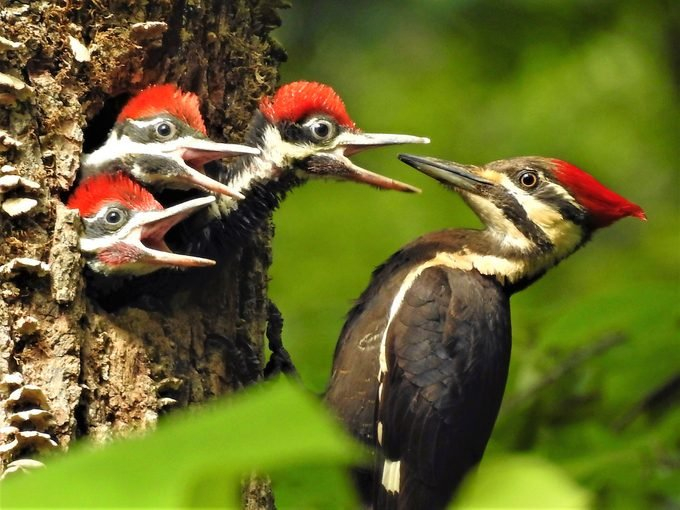
Birds and Blooms -
The Golden-Fronted Woodpecker (Melanerpes aurifrons) is a North American woodpecker. Its primary habitats include riparian woodlands, mesquite, and tropical rainforests. In the United States, it is spread from Texas and Oklahoma through Mexico, Belize, Guatemala, El Salvador, Honduras, and northern Nicaragua. In 1884, Cooke described this species as a thriving inhabitant of Texas's lower Rio Grande Valley.
The Yucatan woodpecker (Melanerpes pygmaeus), which is likewise distributed throughout the Yucatán Peninsula, and the golden-fronted woodpecker have extremely similar plumage. In the field, it can be exceedingly challenging to tell these two species apart. The female golden-fronted woodpecker has more red on the nape of the neck than the male Yucatan woodpecker, and it is far more frequent. It also has a larger body and a longer beak. The Yucatan Woodpecker's base of the bill is surrounded by bright yellow feathers, in contrast to the golden-fronted woodpecker's reddish feathers. The barring pattern on the back of the golden-fronted woodpecker is such that it has a blackish appearance from a distance, whereas that of the Yucatan woodpecker has a silvery appearance from a distance. Finally, the vocalization of the Yucatan woodpecker is also quite different from that of the golden-fronted woodpecker.
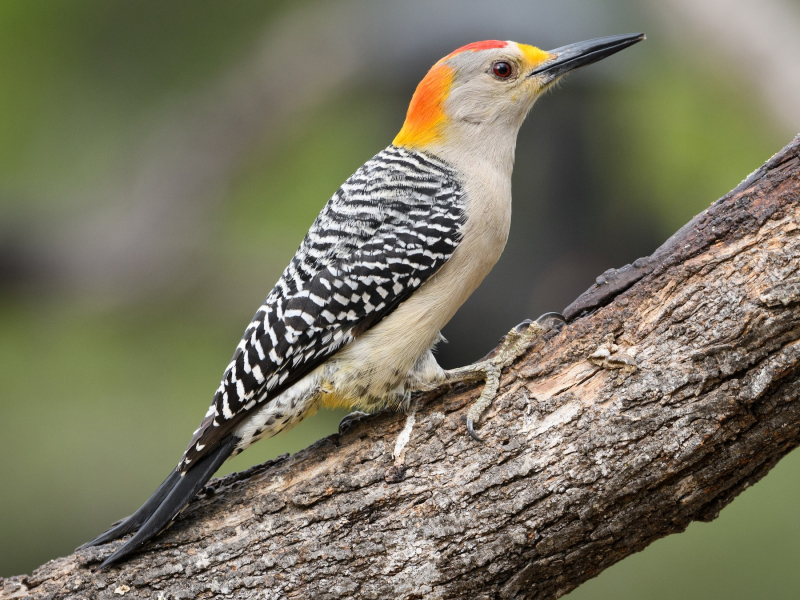
eBird 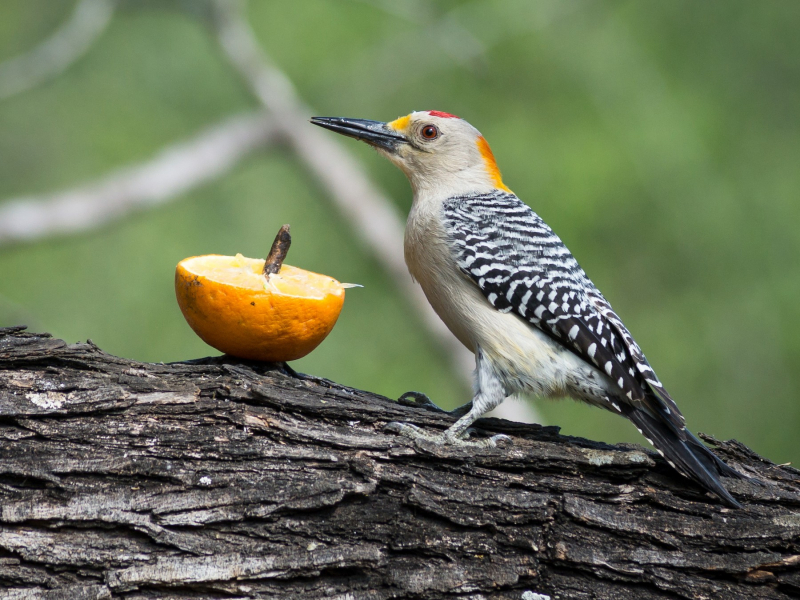
eBird -
The Hispaniolan Woodpecker (Melanerpes striatus) is a medium-sized woodpecker endemic to the Caribbean island of Hispaniola (split between the Dominican Republic and Haiti). It is found in mangroves, pine and palm trees, coffee plantations, dry and wet forests, and palm and pine trees. The species believe in wandering through gardens and forests in social groupings. They are regarded as pests with the potential to harm crops.
The Hispaniolan woodpecker is a bird with black and gold barred feathers that can reach lengths of 22 to 28 cm. The adult male is larger than the female and has a longer beak. He also has a red nape and crown. The back and wings are boldly striped in black and gold, while the top neck is boldly striped in black and white. The upper side of the tail is black with red upper-tail coverts, and the rump is greenish-yellow with some red on the feather tips. The underside of the tail is grey or olive, while the underside of the wings is a greyish-brown color with light spots and bars. The underparts are buff, brown, or olive with some black streaking on the flanks. The fore-crown is grey or buff, and the face and throat are greys. The legs are grey, the iris is yellow, and the long, slender beak is grey. The adult female resembles the male in appearance but has a red nape and a black crown. The juvenile has a dark iris, an orange nape, and a black crown with white and red markings.
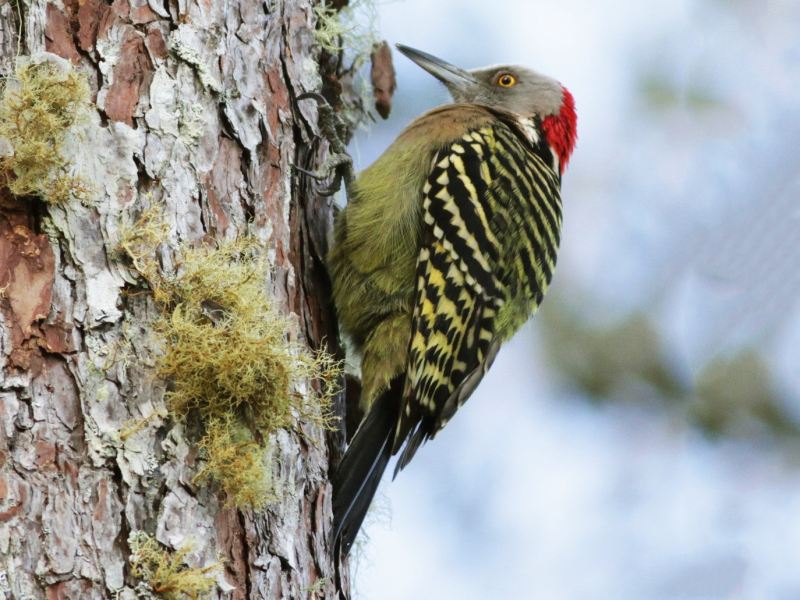
eBird 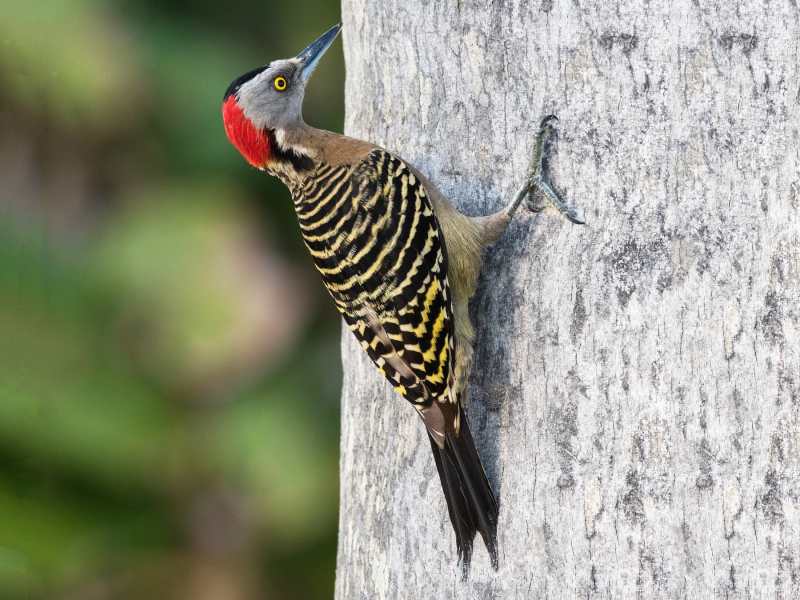
eBird -
The Acorn Woodpecker inhabits the highlands and slopes of California, as well as the southwest regions of the United States, western Mexico, and Colombia's northern Andes. They favor dwelling in mixed oak-conifer and oak woodlands. They favor living in neighborhoods with lots of oak trees and urban parks.
The adult acorn woodpecker has a white forehead, throat, belly, and rump, as well as a brownish-black back, wings, and tail. In fledglings, the eyes are originally dark before becoming white after a few months. They have a little patch of feathers that are greenish on the small of their backs. Adult males of the majority of subspecies have a red cap that begins at the forehead, while females have a black region between the forehead and the cap. Easily identifiable markings are the white patches on the neck, throat, and forehead. When flying, they make a few wing flaps and descend about a foot. When flying, one can see the white rings on their wings. It nearly sounds as though acorn woodpeckers are laughing when they make their call.
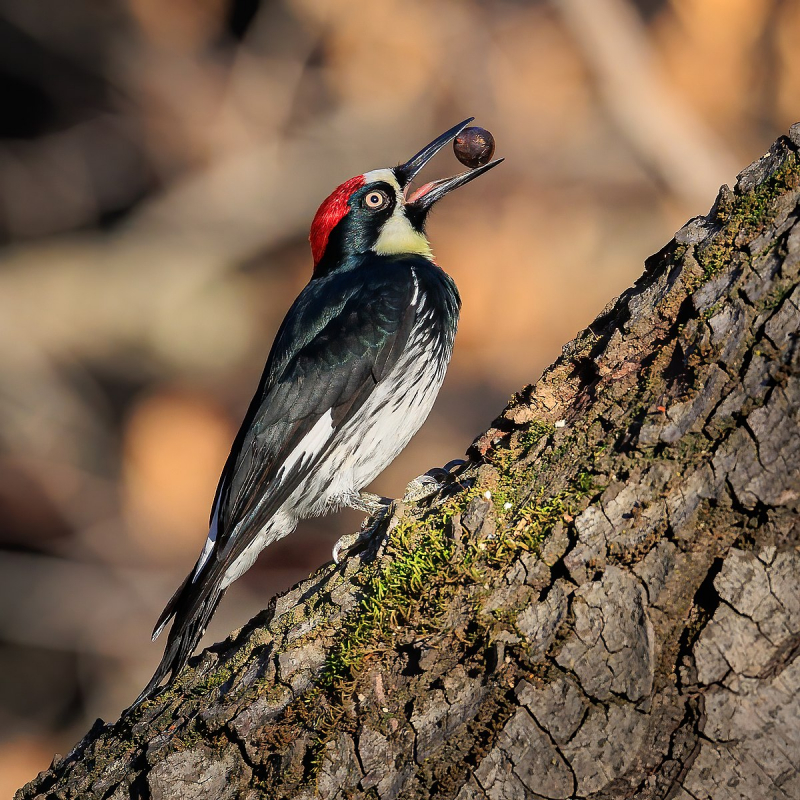
Wikipedia 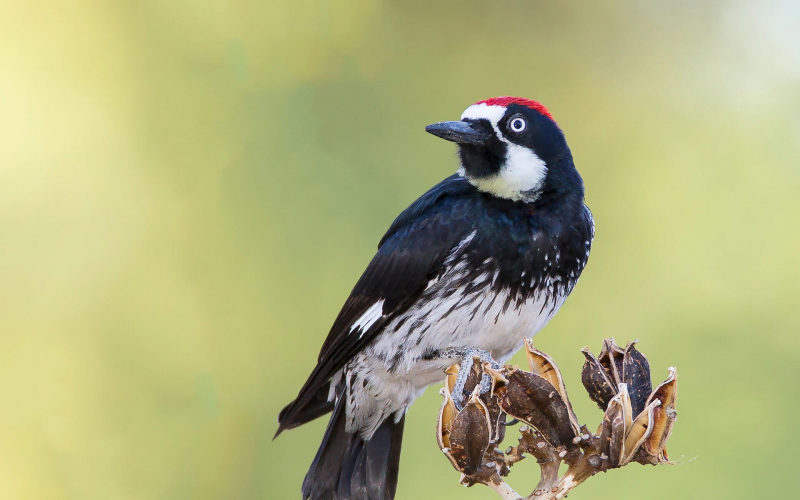
National Audubon Society -
The Northern Flicker, which is native to Northern America, sections of Central America, Cuba, and the Cayman Islands, goes by more than 100 common names. It has difficulty with its species as a result of range overlap, migration, and interbreeding. While Red-shafted Northern Flickers are more common in western North America, Yellow-shafted Northern Flickers are more common in eastern regions of the continent. However, there is a sizable area where interbreeding takes place between the two.
They can be found in savannas, yards, parks, open forests, and areas close to trees. In the western regions, mountain woods are where you can see them as well. They are woodpeckers that are pretty huge and have a lovely appearance. Their brown feathers are decorated with black bars, crescents, and spots. Bright yellow on the birds from the eastern side and red on the birds from the western side make up the undersides of their wings and tail feathers. Yellow-shafted and red-shafted feathers can be distinguished by the color of their feather shafts. Contrary to the view of woodpeckers, they spend most of their time on the ground. They eat insects like ants, flies, butterflies, and beetles. But they also consume fruits, berries, seeds, and nuts.
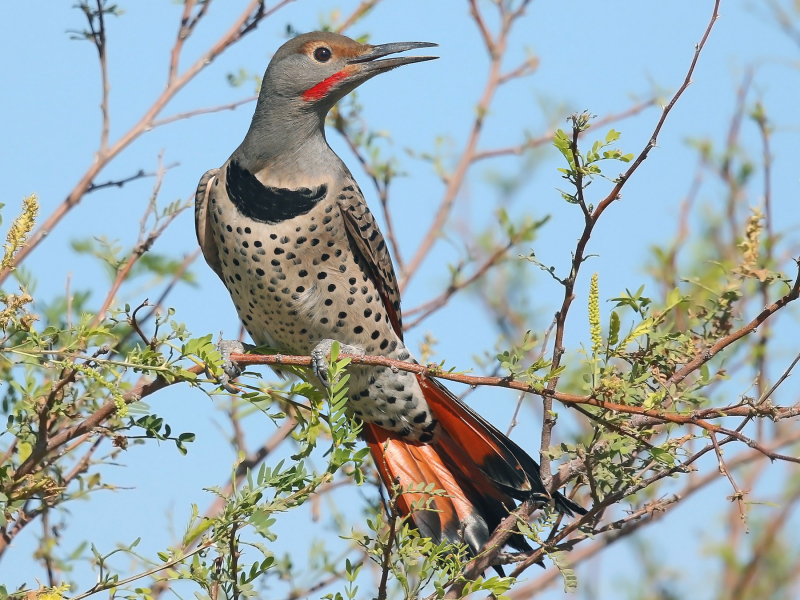
eBird 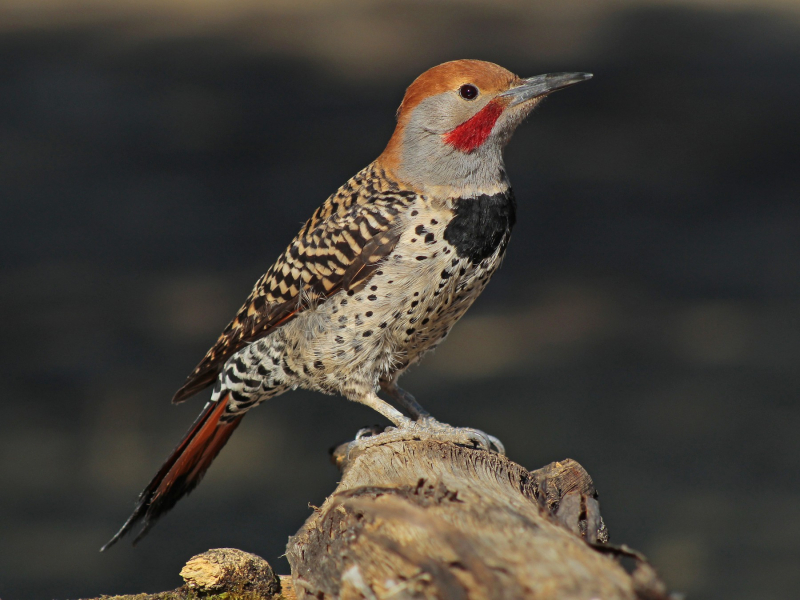
eBird -
A significant portion of South America is home to the Campo Flicker, particularly Eastern Brazil, Bolivia, Paraguay, Uruguay, and North-Eastern Argentina. Northeastern South America and Amazonia both have isolated populations of them. They spend a large portion of their lives hopping and strolling on the ground and favor open habitats including grassland, savanna, farmland, and scrubland.
The black head and nape of the neck, along with the gold sides of the head, neck, and upper breast, make this kind of woodpecker stand out. The throat is black in the northern subspecies and white in the southern “Field Flicker” subspecies. It prefers tree holes, termite mounds, and earth banks for breeding. They eat ants and termites primarily, though they also consume beetles and grasshoppers.
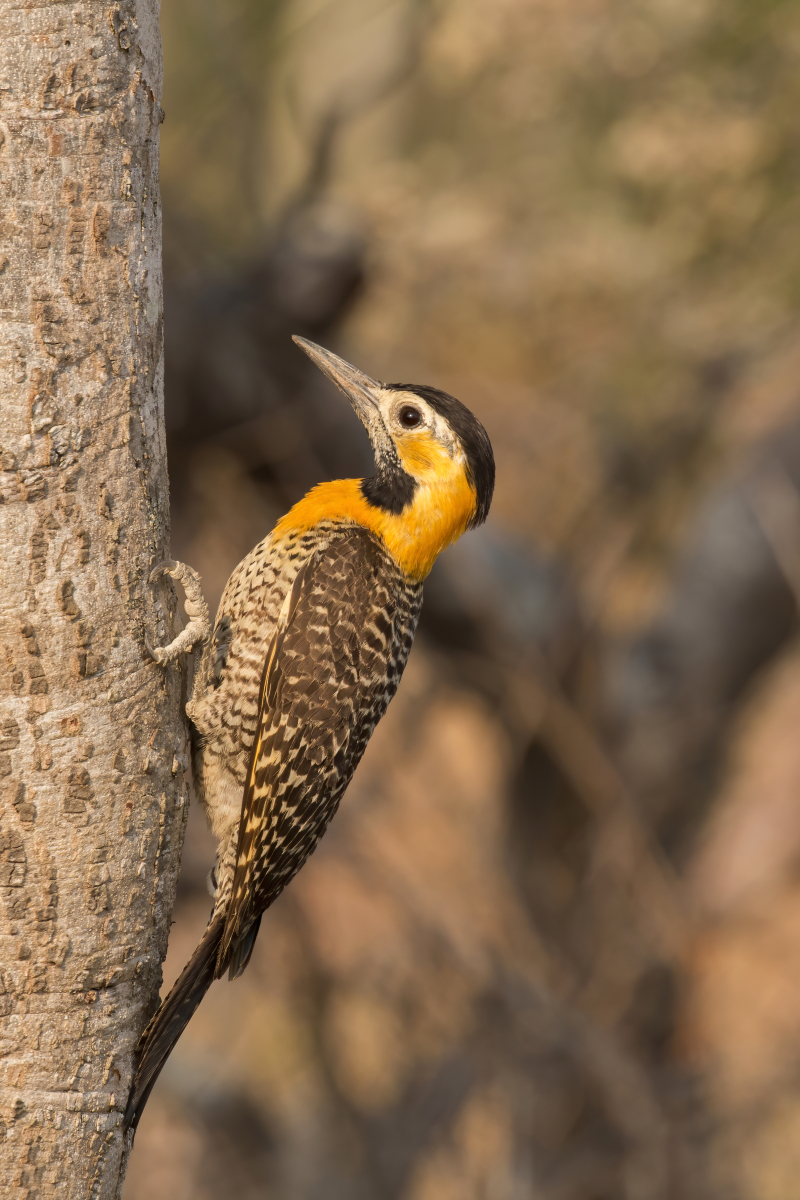
Wikipedia 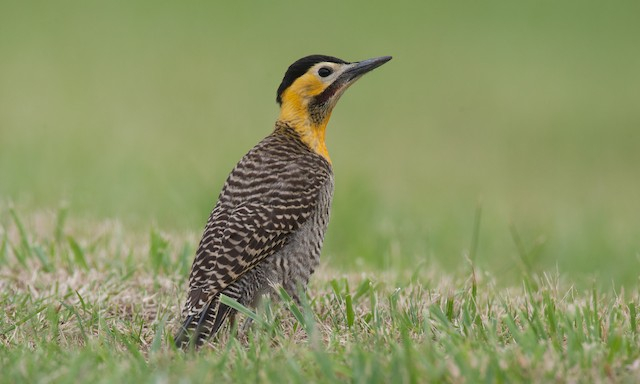
eBird -
The Red-Breasted Sapsucker (Sphyrapicus ruber) is a medium-sized woodpecker of the forests of the west coast of North America. The Pacific Coast Ranges in western Washington, Oregon, and northern California is where red-breasted sapsuckers breed. Southeast Alaska and British Columbia are also breeding locations.
Adults have a white lower abdomen and rump with a red head and upper chest. They have a huge white wing patch and are black on the back and wings with bars. In tree cavities, red-breasted suckers build their nests. Birds on the coast are frequently year-round inhabitants, whereas those in the north migrate to the southern portions of their range. These birds, like other sapsuckers, bore holes in trees and consume both the sap and the insects it attracts. In addition to eating seeds and berries, they occasionally grab insects as they fly. Where their ranges overlap, these birds breed with red-naped sapsuckers or yellow-bellied sapsuckers.
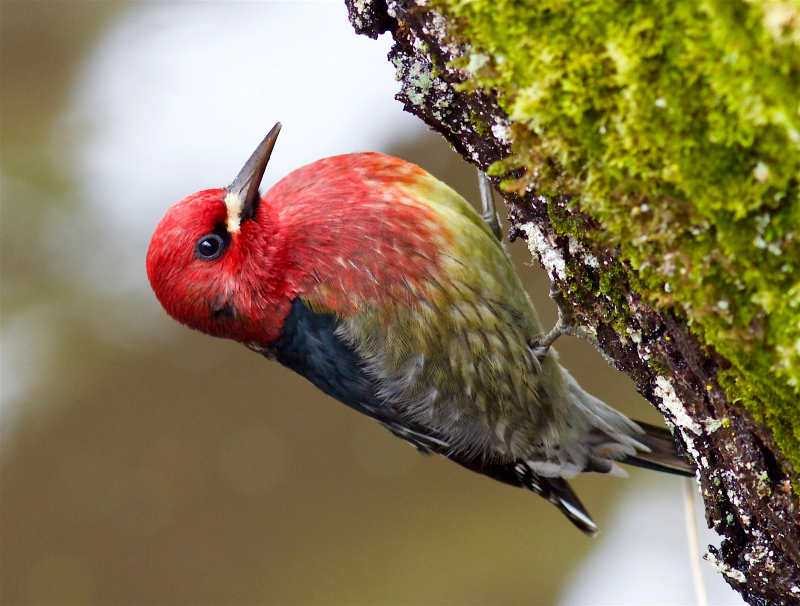
National Audubon Society 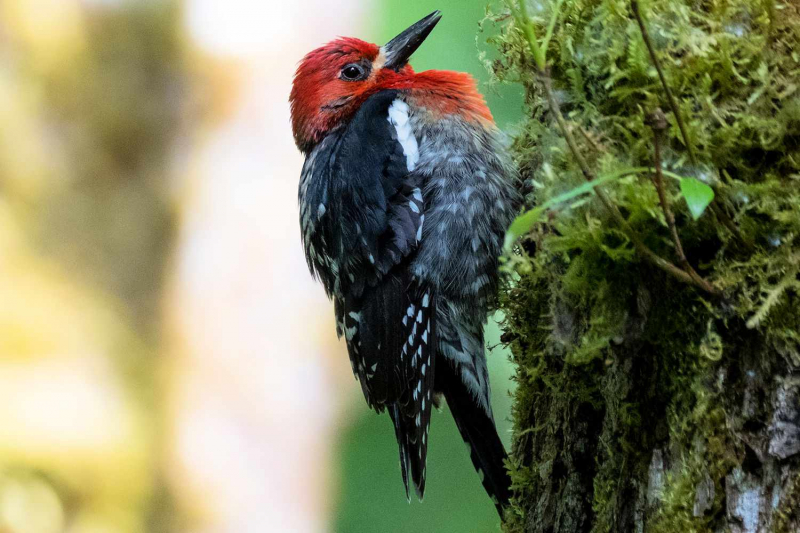
The Spruce -
One of the biggest woodpeckers in Central America is the Pale-Billed Woodpecker. Panama to northern Mexico is part of its habitat. Although it can be found in tropical deciduous forests, it prefers to stay in evergreen tropical lowland forests. In the course of locating insects in trees, they chip out sizable holes. They feed the immature beetle larvae, which they prefer. Berries and other fruits are known to be consumed by some people.
The pale-billed woodpecker is weigh 255 g and measures 37 cm long. It is larger and more robust than the lineated woodpecker yet looks similar. The adult's upper body is primarily black with a light bill, bushy crest, and white shoulder stripes that almost meet in a V on the back. The rest of the underparts are white with thick black bars, and the throat is black. The female is similar to the male but has a black throat and crest instead of red. Without a white facial stripe, the female can be recognized from the lineated woodpecker.
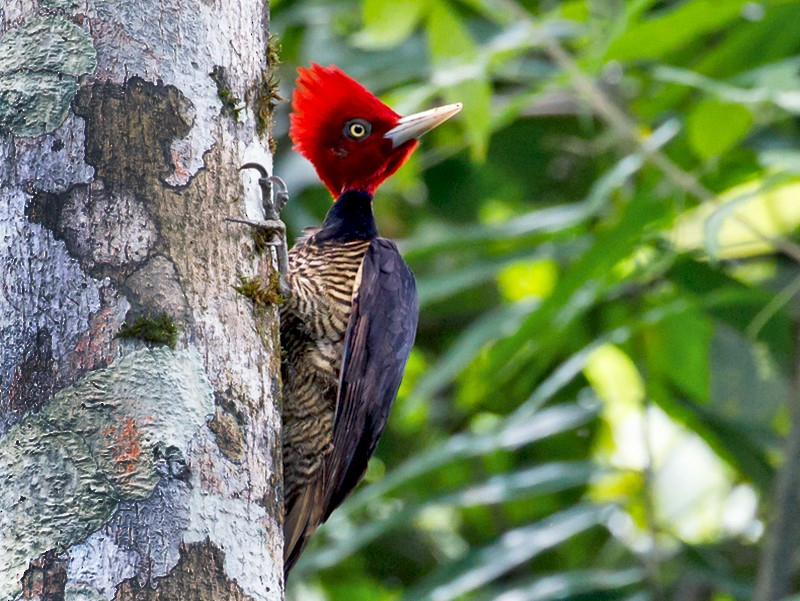
eBird 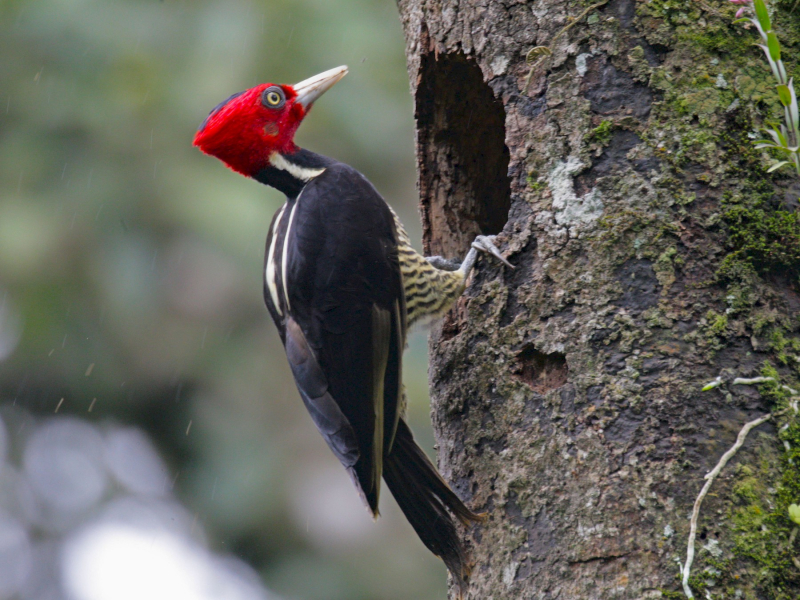
eBird -
A medium-sized woodpecker with pied black and white plumage with a red patch on the lower abdomen is known as the Great Spotted Woodpecker (Dendrocopos major). Red marks can be seen on the neck or head of male birds and juvenile birds. The Palearctic region, which includes sections of North Africa, is home to this species. The same as other woodpeckers, they have anatomical adaptations to handle the physical pressures from the hammering movement. They chisel into trees to obtain food or excavate nest holes, and they also drum to make contact and proclaim their territorial range. The Syrian woodpecker and this species are related.
This woodpecker inhabits various kinds of forests and can take seeds from pine cones, insect larvae from inside trees, or eggs and chicks of other birds from their nests, among other meals. It reproduces in unlined holes made in living or dead trees with the exception of wood chips. There are typically four to six shiny white eggs in a clutch. The eggs are incubated, the chicks are fed, and the nest is kept tidy by both parents. The adults feed the young for around ten days after they fledge, with each parent caring for a portion of the brood.
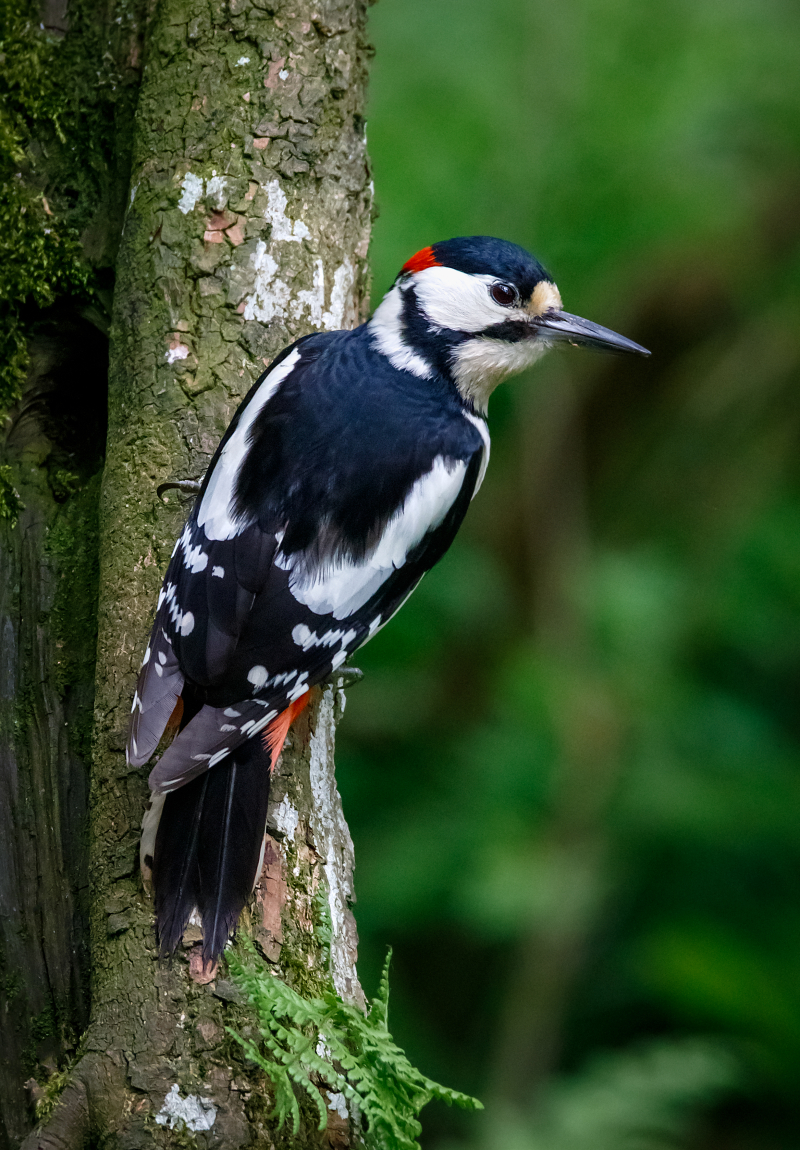
Wikipedia 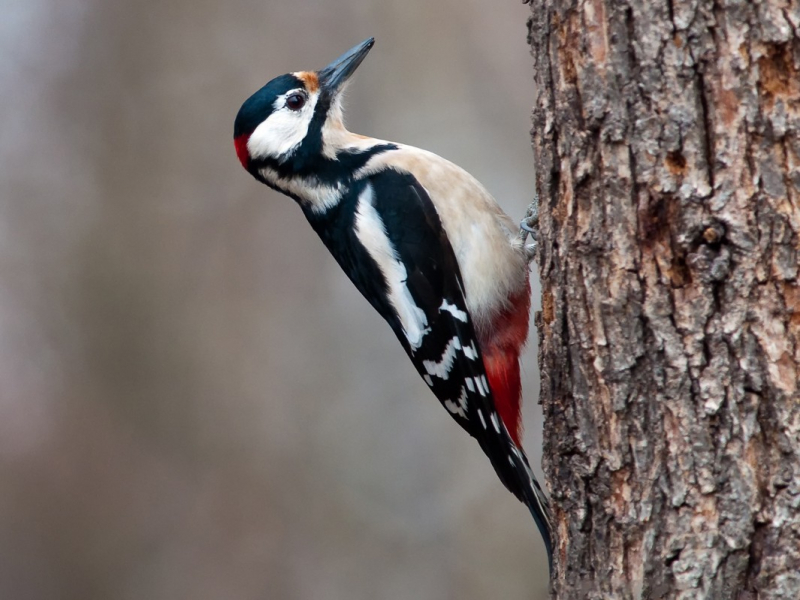
eBird -
The Common Flameback (Dinopium javanense), also referred to as the common golden back, is a small (28–30 cm), three-toed woodpecker in the family Picidae, found throughout South and Southeast Asia. As strict insectivores, their main diet consists of mainly ants as those are the most prevalent, however, they are known to hawk slow-flying insects out of the air and glean other tree-crawling invertebrates.
Men have a brilliant red crest, while females have a black crest with white streaks. This is one of the main visual differences between males and females. Both sexes have a black bottom with white and black spots, a white supercilium, a white cheek stripe, and a white throat region that are all divided by black stripes. The smaller bill and black nape set the bird apart from other similar golden-backed woodpeckers like the greater flame back (Chrysocolaptes guttacristatus), while its red rump and white neck set it out from the black-rumped flame back. The greatest method to tell the Himalayan flame back from the common flame back, which is a virtually identical species, is by listening to its loud, high-pitched call, which sounds like a sequence of "kow-kowp" rattles.
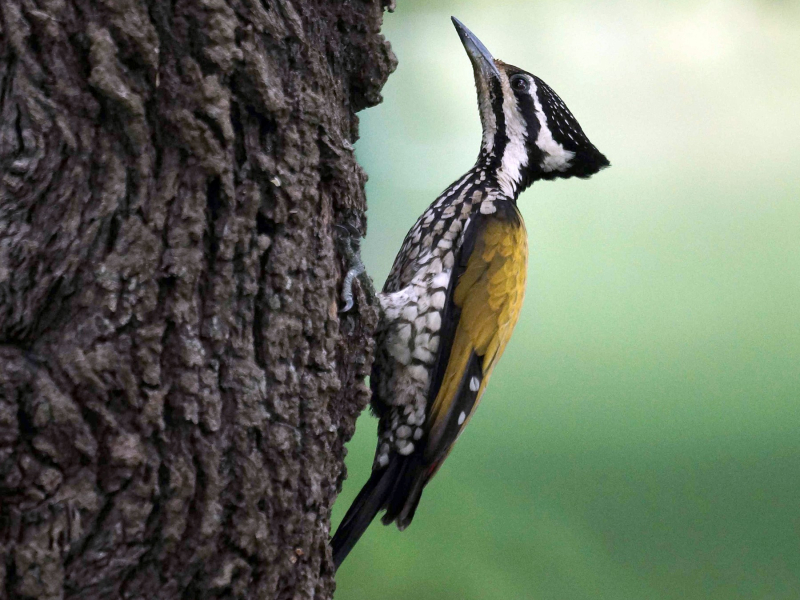
eBird 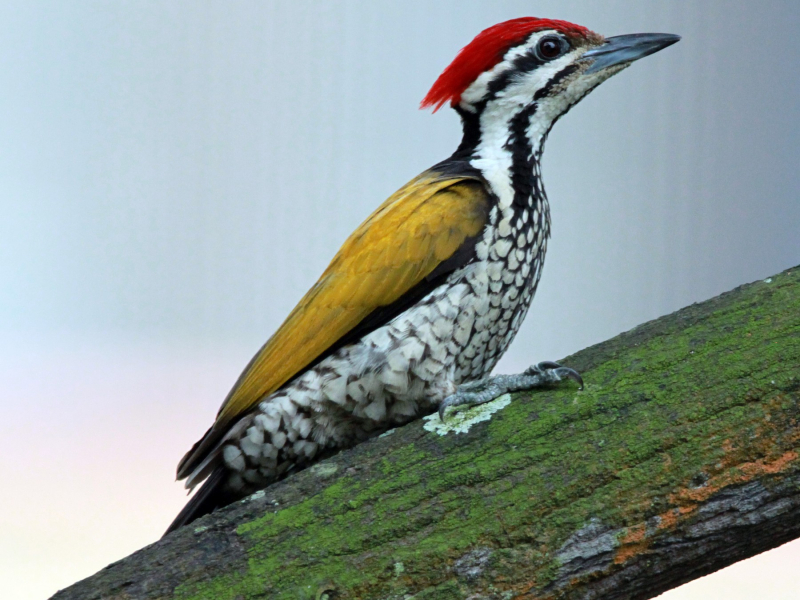
eBird















